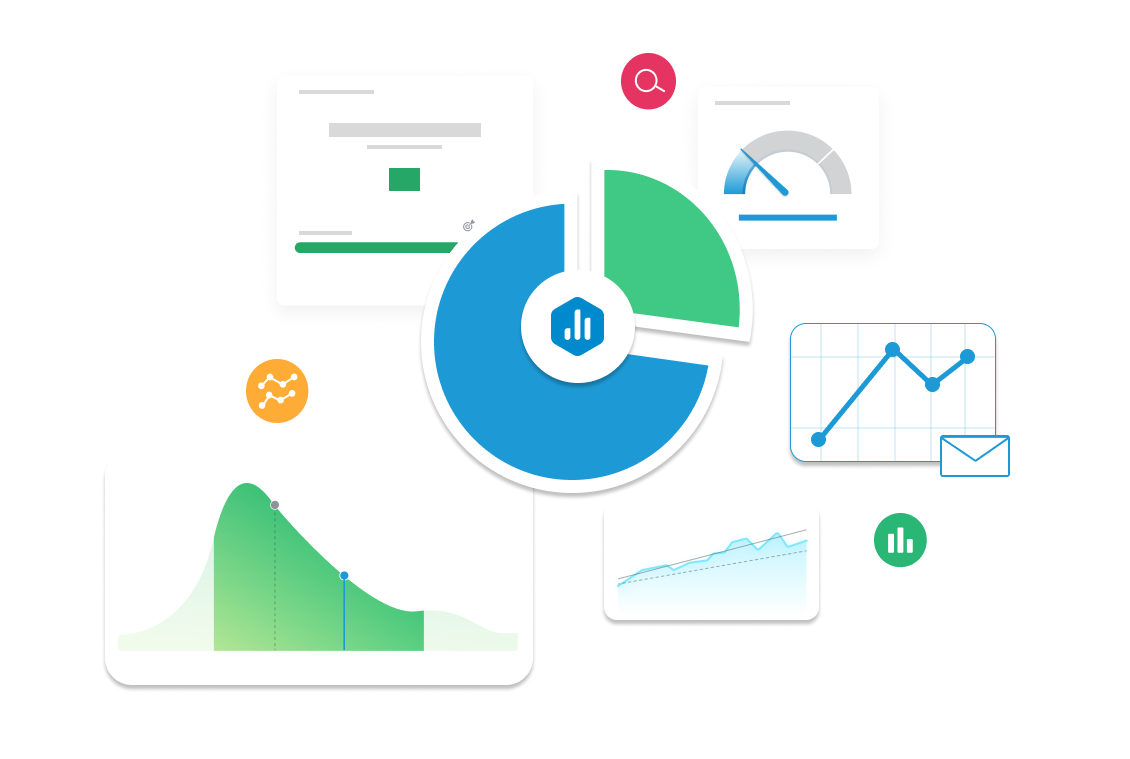Click Through Rate
Click-Through Rate (CTR) is a key marketing KPI that measures the percentage of users who click on a link after seeing it. A higher CTR indicates compelling content, effective ad copy, and strong audience interest. Tracking CTR helps optimize campaigns, improve engagement, and drive conversions.

| Category |
Marketing |
|---|---|
| Type |
Leading indicator |
| Calculation |
CTR = (Total Clicks / Total Impressions) × 100 |
| Measure |
Click-Through Rate (CTR) measures the percentage of users who click on a link after seeing it. A higher CTR indicates effective messaging, strong call-to-actions (CTAs), and audience interest. |
| Data Sources: |
Google Ads, Google Analytics, Facebook Ads Manager, LinkedIn Ads, Twitter Ads, Email Marketing Platforms |
| Frequency |
Real-time, Daily, Weekly, Monthly |
Example target
Increase average CTR by 15% in Q3 by optimizing ad copy, CTA placement, and audience targeting.
Example Reports Use Case
CTR helps marketers evaluate campaign effectiveness and user engagement. A performance marketer may track CTR to optimize ad spend, while a content strategist may analyze CTR trends to improve email marketing and landing page effectiveness.
What is Click-Through Rate (CTR)
Click-Through Rate (CTR) is a simple metric that tells you how many people clicked on your ad, link, or email after seeing it. It shows how effective your content is at grabbing attention and driving action. If 100 people see your ad and 5 click on it, your CTR is 5%.
CTR is important because it helps marketers understand what’s working. A high CTR usually means your message is clear, your offer is appealing, and your audience is interested. A low CTR can be a sign that something needs fixing like your design, headline, or targeting.
The basic formula is:
CTR = (Clicks ÷ Impressions) × 100
This metric is used across platforms from Google Ads to email marketing to social media to evaluate performance and make smarter decisions. Understanding CTR help you improve engagement, increase conversions, and get more value from your marketing efforts.
How to Calculate Click-Through Rate (CTR)
Click-Through Rate (CTR) is always calculated the same way:
CTR = (Clicks ÷ Impressions) × 100
But there are different ways to look at CTR depending on what you want to learn:
-
Monthly CTR
This helps you track changes in performance over time.
Example: If your ad got 500 clicks and 10,000 impressions in March:
CTR = (500 ÷ 10,000) × 100 = 5% -
CTR by Channel
This shows which platform performs best—like email, Facebook, or Google Ads.
Example:
-
Email: 100 clicks ÷ 2,000 opens = 5% CTR
-
Facebook: 80 clicks ÷ 8,000 impressions = 1% CTR
-
CTR by Device or Audience
Segmenting by device (mobile vs. desktop) or by audience helps fine-tune targeting. A mobile ad with a 6% CTR vs. desktop at 2% could tell you where to focus your budget.
Why Click-Through Rate (CTR) Matters
Click-Through Rate (CTR) is a key indicator of how well your marketing grabs attention and drives action. It tells you what percentage of people who see your content like an ad, email, or link actually click on it. A higher CTR means your message is working and your audience is engaged.
CTR ties directly to goals like growth and efficiency. For example, if two ads cost the same but one has a higher CTR, it’s giving you more traffic for your money. Over time, monitoring CTR helps you spot trends, improve campaign performance, and reduce wasted ad spend.
Marketers, performance teams, and executives should all watch CTR. It influences key decisions like which messages to scale, which audiences to prioritize, or when to tweak creative assets. In short, a healthy CTR helps you get better results from your marketing efforts while supporting bigger business goals like revenue and reach.
Related KPIs to Click-Through Rate (CTR)
Click-Through Rate (CTR) is just one part of the larger performance puzzle. It works closely with other KPIs to show how effective your marketing really is.
CTR vs. Impressions
Impressions measure how often your content is seen, while CTR shows how often it gets clicked. More impressions don’t always mean better results if CTR is low, it could mean your message isn’t landing well. Tracking both helps you balance reach and engagement.
CTR vs. Conversion Rate
CTR shows how many people click, while conversion rate shows how many of those clicks turn into signups, sales, or leads. A high CTR with low conversions might mean your landing page needs work. Together, they show the full customer journey.
CTR vs. Cost per Click (CPC)
A higher CTR often leads to lower CPC, especially in paid ads. That means you’re getting more traffic for less money—great for ROI.



